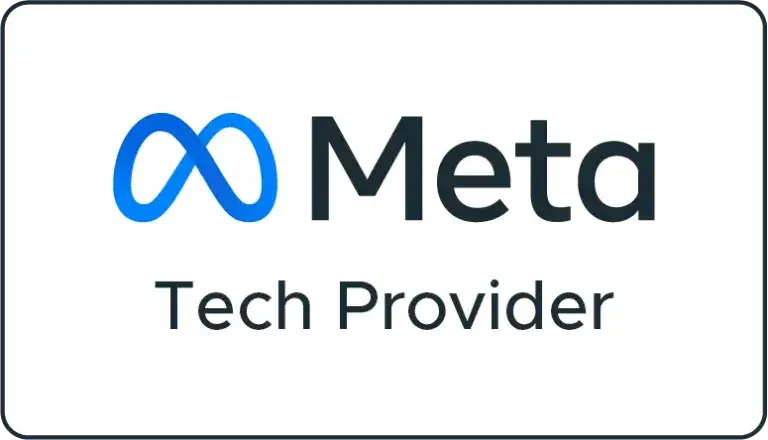
Table of Contents
Enterprises are always submerged under data—from the number of hits on a website to the likes on a social media post. They are trying to figure out how to turn this data into real business outcomes. Data-driven marketing is usually the answer.
Businesses can now make informed decisions and drive optimized marketing for their data to yield some real bottom-line value. This blog will uncover strategies and plays that will help raw data become a profit-driven asset. Get set to dive deep into ways to make data your competitive advantage and reach sustainable growth.
Why Data-Driven Marketing Matters in Today’s Landscape
A Brave New World of Data in Marketing
The digital revolution has exploded data. It is available to businesses, in spades, from website analytics to social media insights about their customers. It would be an organization’s best bet to harvest this data in trying to derive deeper insights into consumer behavior, preferences, and the journeys of buying.
Traditional Marketing vs. Data-Driven Marketing: A Flawed Approach vs. Informed Decisions
Most marketing decisions in the past would base themselves on intuition, experience, and feel for market trends. Although these factors are still considered, they don’t help that much in today’s fiercely competitive market. Fact-based marketing makes sure that whatever decision goes through is based on insight, and it can be based on hard data. This approach means that any marketing strategy is only useful to the degree that it produces.
How Marketers Win with Data-Driven Marketing?
A data-driven approach to marketing gives a successful edge with tangible results.
Key advantages, among other things, are:
Increases ROI
Businesses can do this by budgeting for various campaigns based on the money acquired from the data, which hence helps increase returns. Better audience targeting: With a very good understanding of your audience, you will be able to properly target your advertisements to get to the right people with the right message. Better customer experience: With data-driven personalization featuring tailored experiences, one can be better sure of a high level of satisfaction and loyalty from the customers. Reduced marketing costs: Businesses can save money while achieving better results by optimizing ad spend and channel allocation.
Data-Driven Decision Making
All the guesswork is taken out, and the information forms assistance in making informed decisions that drive business growth. Competitive Advantage: Working effectively with data, businesses are placed at a better position to have the upper hand over their competitors who work based on gut feeling.
Getting Started with Data-Driven Marketing: Step-by-Step
Most importantly, genuinely solid groundwork has to be laid before delving straightaway into advanced data analysis and strategy. Clear setting of objectives and identifying relevant sources of data, the right measurements or metrics to go with, and tools to collect and do the analysis of your data.
Setting SMART Goals & Objectives
Effective data-driven marketing begins right from the proper definition of a goal. Smart—specific, measurable, attainable, relevant, and time-bound—goals set how success will look. For instance, instead of “increase website traffic,” which is a very vague goal, “increase organic website traffic by 20% in the next quarter” is more desirable.
Identifying the Right Data Sources
From these data sources, you can then be informed on making the right decisions. The most common data sources are:
Website Analytics Information on visitors to a website, user behaviour, and conversion rates.
CRM Data Trends in customer interaction, purchase history, and demographic data.
Social Media Analytics Information about social media engagement, reach, and sentiment.
Email Marketing Data Statistics for open rates, click rates, and conversion rates.
Market Research Data Industry trends, consumer preference, and competitor activities.
How to Decide the Right Metrics to Measure?
With this kind of wholesale volume of data at your fingertips, everything is about the metrics that really matter to your business. This would include most probably:
- Website Traffic: The total of visitors to your website and trends.
- Conversion Ratios: % that you convert from visitor to wanted outcome—% that buy, sign up, etc.
- Profit per Customer: Total P&L sum received from each customer.
- CAC: Calculate Customer Acquisition Cost.
- ROI: Marketing campaign return on investment

Tools for collection
There is a series of tools that assist in collecting and analyzing this data more effectively. Some of the most popular include:
- Google Analytics: Web-based comprehensive analytics platform
- CRM Software: Customer relations management software that manages customer relationships but also allows for recorded interactions
- Social Media Management Tools: Measure Social media performance, engagement
- Email Marketing Platform: Track email campaign performance.
- Marketing Automation Platforms: Automate marketing activities and collect data.
How to Make Use of Your Data to Optimize Your Marketing Strategies
Now that you have the base to collect and analyze your data let’s talk about using this data to improve different marketing channels.
Creating Content Your Audience Wants to Read: Data-Driven Content Marketing
Powered by data, content marketing can be very insightful. If you are armed with what genuinely piqued the interest, taste, or pain point of your audience, you can create something that really resonates with and drives engagement.
Keyword Research: A data-driven keyword research process helps to find out what your target audience is actually looking for, and you can use it to optimize content while considering the search engine and user intent.
Content Personalization: Personalize content for the various audience demographics, behaviour, and preferences.
Optimizing Paid Advertising Campaigns for Better ROI
Data holds the key to maximizing the ROI from your paid advertising efforts.
Targeting: It allows to precisely target your ideal customers based on demographics, interests and behavioural parameters.
Bidding Strategies: The data in fashioning proper bidding strategies ensures that you are spending the right cost per click.
Data-driven Email Marketing: Personalized Campaigns for Better Engagement & Conversion
Email marketing is by far one of the most efficient channels when powered by data.
Personalized campaigns: E-mail content and offers have to be customized in line with individual preferences and behaviour.
A/B testing: Run multiple subject lines, e-mail content, and CTAs to find the magic combination.
Knowing your audience inside out and crafting content that will charm them.

Use these data-driven insights to succeed in social media marketing.
Audience Insights: Know your audience and what they are likely to share their interests in, to create relevant content.
Content Performance Analysis: User engagement metrics that can help identify high-performing content and adjust the strategy accordingly.
Turning Information into Action: Practical Examples of Data-Driven Marketing Success
Case Study 1: Example Company – How They Used Big Data to Boost Sales by X%
Identify a related company and quantify the increase in sales. E.g., ran sales up by 30% by harnessing customer purchase history and suggested products on Amazon.com Include all specific details on data analyzed, strategies adopted, and results achieved. Case Study 2: (Company Example) — Y% Gain in Customer Retention through Data-Driven Approach.
Name another company and state by what percentage it had enhanced customer retention.
You can say how information about the watching habits of users made a difference in making recommendations on a subscription-based service like Netflix that led to a 25% reduction in churning. Explain how they segment their customers, how they utilize the data to customize content.
Key Learnings from the Case Studies: Implement the Learnings in Your Own Marketing Solution:
Now, let’s wipe off some key takeaways and examine them against the backdrop of your marketing efforts.
Summarize the common themes of the case studies below. Give the reader some next steps for using data in their business. Emphasize testing and continuous optimization.
Common challenges of data-driven marketing & how to overcome them
Selecting the Right Data and Metrics Is Often Overwhelming
There is just such a gargantuan pile of data, and it turns out to be a paralysing call on using or monitoring which measures.
Put it in line with the business goal; ”track only what eventually gives meaning to the goals.”
Start small: Start off with a few key indicators and keep building it therefrom.
Data quality: The data mined has to be right, credible upon use, and updated
Problems with Data Acquisition and Integration
From the point of source acquisition to the integration of the different relations into one system, it can be very involving.
Use data management tools: Software use should be employed to reduce the time that can be spent acquiring and integrating data.
Create a data warehouse: Ensure data is easily accessible from a central location to be analyzed.
Data governance: Clearly describe data ownership and access. Overcome Tribal Knowledge and No Intern Buy-in to a Data-Driven Culture. Using data to influence culture and solve people’s problems. Ways to move tribal knowledge into data systems and establish internal support for data. Teach stakeholders about the value of data with real-world examples and case studies. Engage the right people – ask for input, and executive involvement is crucial.
Share success stories that will underscore the difference data-driven decisions can make. How to conquer such challenges
Such challenges call for strategic ways of conquering them.
Data-driven culture: develop a mindset that values information and insights.
Continuous learning and development: Equip your team with the ability to analyze data.
Iterative refinement: Data-driven marketing is an iterative process. Test-measure-learn-improve, repeat.
The future of data-driven marketing: trends & emerging technologies.
Things change quickly in data-driven marketing, but not nearly as quickly as the technologies underpinning it. The trends pointed out in the following points evaluate some of the essential features that impact this industry.
Artificial Intelligence and Machine Learning in Marketing
AI and ML are upturning how marketers converse with customers and crunching through reams and reams of data.
Predictive analytics: Understanding what customers will do and want.
Chatbots and virtual assistants: Enhancement of customer support and engagement.
Image and video recognition: The generation of insights from visual content
Automation: Process of recurring work for better efficiency.
The Emergence of CDPs
CDPs have evolved to become the customer data managing and activating technology.
Single customer view: one view of a customer
Data is activated: actioned to produce a channel-agnostic experience
Real-time decisioning: reacts in real-time to a customer
Ethical Aspects of Data-Driven Marketing Practices
Value addition strengthens data, and with it comes the necessity of having ethical considerations.
Data privacy and security are all about ensuring customers’ information is protected. Transparency is openness in matters to do with data collection and use. Bias mitigation goes further to ensure fairness and inclusivity of the algorithms that are data-driven. Consent management, on the other hand, institutionalizes clear and informed consent at the very core of customers.
Data—Embracing for Marketing Success
Today, leveraging these assets in a competitive landscape is no longer an option; it’s a requirement in order to drive marketing success. In other words, businesses informed by their data will know their customer better, adjust their strategies to grow, or measure ROI. With this, we have seen direct decision-making tied back to the data, which in its nature brings efficiency to campaigns and custom customer experiences that ultimately could be measured for ROI.













